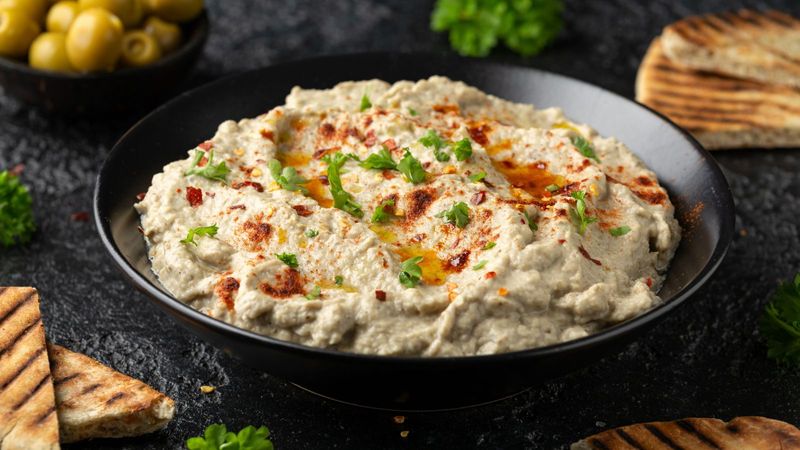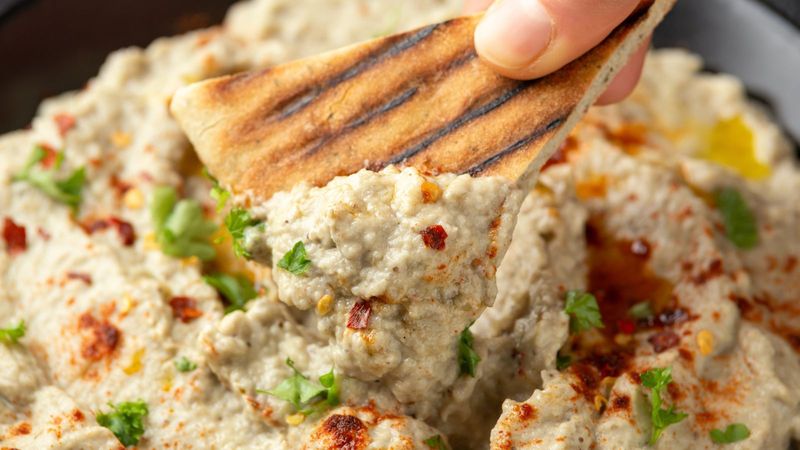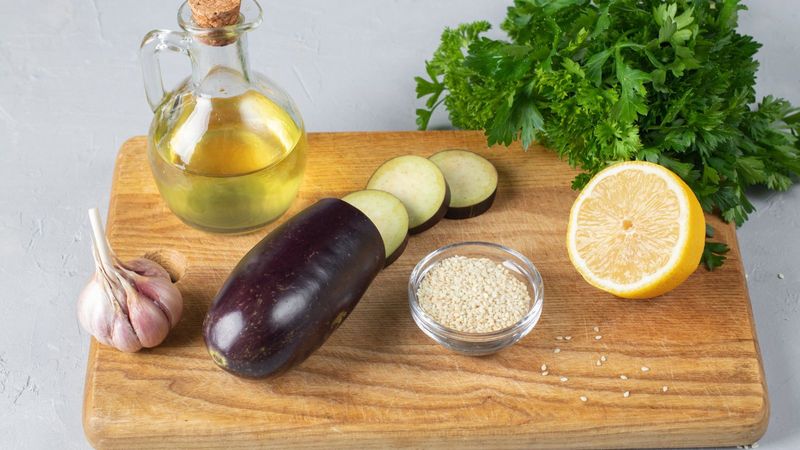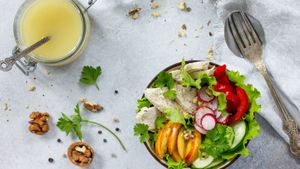Originating from the heart of the Middle East, baba ganoush isn't just a dish; it's a testament to the rich culinary tapestry of the region. The name itself is derived from Arabic, with ‘baba' meaning father or elder, and ‘ganoush’ referring to the eggplant. Historically, this beloved dish has roots tracing back to the Levantine region, encompassing countries like Lebanon, Syria, and Palestine, where it was first crafted by ingenious cooks looking to celebrate the bountiful produce of the land.
Over centuries, the baba ganoush recipe underwent various transformations, with each region adding its unique twist. From the fertile valleys of Lebanon to bustling marketplaces in Jordan, the essence remained consistent: a harmonious blend of smoky, charred eggplant, luscious olive oil, zesty lemon juice, and aromatic garlic. The dish's migration to Western countries introduced it to global palates, leading to its widespread popularity and adaptation into diverse culinary landscapes.

Today, this Middle Eastern classic has transcended borders, finding its way onto international dinner tables, gourmet restaurants, and home kitchens alike. Its creamy texture and smoky flavour, paired with the nostalgia of ancient recipes and traditions, make baba ganoush a cherished delicacy.
And the best part? You don't require a reservation at an upscale restaurant or a trip halfway across the world to indulge in its delights. With a few fresh ingredients and a dash of culinary passion, you can recreate an authentic baba ganoush recipe right in your kitchen, bringing the essence of the Middle East to your dining table.
Baba ganoush ingredients

Before diving into the baba ganoush Lebanese recipe, let's gather our essentials. Typically, you'll need:
- Eggplants (the main star)
- Garlic cloves
- Fresh lemon juice
- Olive oil
- Salt and pepper
- Tahini (optional, however, for those looking for alternatives, there's a baba ganoush recipe without tahini)
Crafting the perfect baba ganoush

- Begin by roasting your eggplants until the skin is charred and the insides are tender. Allow them to cool before peeling.
- In a food processor, blend the roasted eggplant flesh, garlic cloves, lemon juice, and salt until smooth.
- While blending, drizzle in olive oil to achieve that desired creamy consistency.
- Taste and adjust seasonings as per preference.
PS: If you're following a baba ganoush recipe without tahini, the olive oil and garlic will lend it a rich flavour, making it just as delightful.
Innovative serving ideas
While baba ganoush is undeniably delicious on its own, consider these creative ways to elevate your culinary experience:
- Baba ganoush bruschetta: Spread it generously on toasted bread slices, topped with cherry tomatoes and fresh basil.
- Grilled veggie dip: Serve alongside grilled vegetables like zucchini, bell peppers, and mushrooms.
- Baba ganoush pizza base: Use it as a unique pizza sauce alternative topped with feta cheese, olives, and sun-dried tomatoes.
- Middle Eastern mezze platter: Pair with pita bread, falafel, hummus, and olives for an authentic spread.

FAQs
1. What is the difference between hummus and baba ganoush?
While both are Middle Eastern staples, hummus primarily consists of chickpeas, whereas baba ganoush features roasted eggplant as its main ingredient.
2. Can I make baba ganoush without tahini?
Absolutely! A baba ganoush recipe without tahini can be achieved using olive oil, garlic, lemon juice, and seasoning to achieve a rich flavour and creamy texture.
3. How long can I store homemade baba ganoush?
When stored in an airtight container in the refrigerator, homemade baba ganoush can last up to 4-5 days.
4. Is baba ganoush gluten-free?
Yes, traditionally made baba ganoush is gluten-free. However, always check individual ingredient labels, especially if using store-bought versions.
5. What are the health benefits of baba ganoush?
Rich in vitamins, minerals, and antioxidants, baba ganoush offers dietary fibre from eggplants and heart-healthy fats from olive oil, making it a nutritious addition to meals.



_1701850817173_thumb_300.jpeg)
